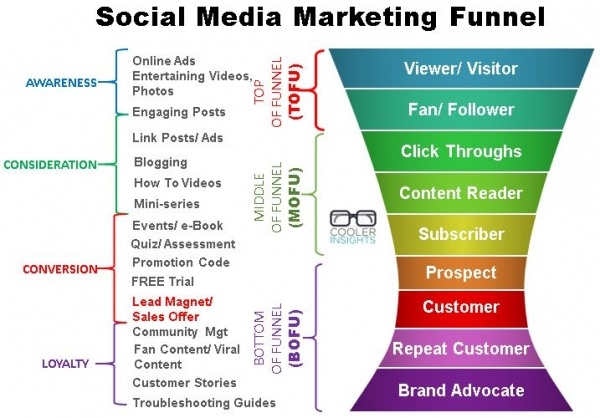What is Social Media Marketing?
Wonder how you can tap on social media marketing?
Keen to take baby-steps in growing your brand and expanding your business on Facebook, LinkedIn, Instagram, YouTube, Twitter or Pinterest?
Social media is now mainstream media. With billions of users around the world, social networks have exerted more impact on how people think, feel and act than virtually any other digital channel. Collectively, social media can influence public opinion, political landscapes, and economic environments in vast and significant ways.
Continually evolving, social media platforms like Facebook, Twitter, Instagram, YouTube, and LinkedIn have become a part and parcel of everyday life and stalwarts of the digital world, while emerging social apps like TikTok and Telegram start to make their presence felt.
As the world adopts a social-first stance in consuming content, social media marketing has become an imperative for businesses and brands both big and small. As users share information in different forms – pictures, videos, stories, and live streams – their buying behaviours have radically changed. More consumers have begun starting their purchase journeys online.
This shift makes it necessary for businesses and brands to embrace various digital marketing techniques to remain competitive in the modern marketplace.
Huge conglomerates like Coca-Cola, Ikea, Intel, and Airbnb have used social media to enhance brand awareness, grow communities and improve their marketing reach. Ditto for solopreneurs, start-ups and SMEs attracted to social media’s lower cost of entry relative to traditional media channels.
But what does social media marketing truly mean? And how can your brand leverage on this ubiquitous channel?
In this article, we will cover the basic elements in social media marketing that you can use to attract, engage, convert, and delight your online customers.
Related: 15 Key Social Media Marketing Statistics for Singapore Digital Marketers (with analysis)
What is Social Media Marketing?
Social Media Marketing involves using social networks to create, curate and share valuable content to a targeted audience in order to market a company’s products and services.
The goals of social media marketing are to increase brand awareness, build online communities, attract leads and generate revenue.
Marketing through social media platforms like Facebook, Instagram, LinkedIn, YouTube, and others helps businesses to increase their brand awareness, engage their communities, drive sales, and deliver better customer experiences.
A successful social media marketing strategy involves creating unique social media profiles, publishing great content, engaging your followers, analysing results of engagement, and running various advertisements to promote your business. Brands using social media for marketing should tailor their content to suit specific platforms and customer base.

In thinking about social media marketing, it is useful to break down the different components of social media. To simplify them for easy recall, let us call them the 6 Cs:
- Customers: You need to know who your target audiences are, where they typically hang out online, and what their interests are like.
- Content: Social media eats, lives and breathes content. Your goal as a social media marketer is to create engaging and shareable content that amplifies your brand.
- Channels: There are numerous social media networks, from Facebook, LinkedIn, Instagram, YouTube, Twitter, to Pinterest and blogs. Each have their own unique qualities.
- Campaigns: Increasingly, companies realise that they need to invest some advertising funds to amplify their social media marketing activities.
- Calibration: Thanks to the availability of social media analytics tools, you can assess the results of your marketing efforts and calibrate them accordingly.
- Communities: If content is king on social media, then communities must be queen. Building a strong network of followers can help your brand gain traction online.
Customers: Who Are Your Customers On Social Media?
First and foremost, you need to identify your online customers.
What are their educational and economic backgrounds like? Where do they live? What concerns do they have in their day-to-day lives?
If you are selling to businesses, these considerations may include the size of the companies you are reaching out to, their interests, as well as their procurement processes and cycles.
Beyond these pointers, it is also important to consider your customer’s online activities. What are some of the topics that could trigger their interests? How can you distil and discern their pain points and keywords?
By mapping out your customer profile, you’ll have a stronger foundation to begin your social media marketing activities with.
What Content Should You Create On Social Media?

Content is king. On social networks, they may take a wide variety of formats, from text posts, image posts, link posts, videos, to infographics and ads.
There are three important factors to consider when you create content on social media:
- Searchable: Is your content ‘findable’ online, and will people care enough to search for it?
- Snackable: Does your content fit well into a mobile-first format? Is it easy to consume and understand?
- Shareable: Does your content make your users want to share it on their own social networks?
Beyond these factors, it is also important to consider the value of storytelling. Virtually all the legendary campaigns on social media have a strong storytelling component.
If you don’t know how to get started, check out my winning schedule for social media content creation.
Related: What Is Content Marketing? Definition, Benefits, and Examples & 120 Types of Digital Content for your Next Marketing Campaign
Channels: What are the Popular Social Media Channels?
Brands and businesses can leverage several social media marketing channels. However, note that the success of each platform requires social media marketers to implement a good marketing strategy.
This involves understanding the type of users on each platform and creating specific social media marketing content types that fit well with the target market in the platform.
Some of the popular social media channels include the following:
YouTube

As the second largest search engine after Google, YouTube has carved a niche for itself as the new TV. Virtually everyone watches a video on YouTube to entertain, educate or enrich themselves.
With the huge number of YouTube Channels available out there, gaining traction here requires a significant amount of investment in producing quality videos that are keyword friendly, topical and valuable.
- Number of Users – 1.9 billion
- Type of audience – Generation Z and Millennials
- Industry impact – B2C and B2B
- Best for – entertainment, education, and how-to videos
YouTube remains the number one platform for sharing video content. It also doubles up as an incredibly authoritative social media marketing platform. As a search channel, YouTube has the unique property of enabling evergreen videos to continually attract video views.
To succeed here, invest in creating how-to videos that are insightful and educational. These videos should also be optimised for the right search keywords, and be engaging. Such videos have an added advantage on ranking, as they may also show on Google search results.

With over 2.2 billion worldwide users, Facebook is the largest social network of all. Increasingly, more users access Facebook using their mobile devices.
Functioning more like a content management system than a conversational platform alone, Facebook allows you to create a wide variety of content types – from text, photos, videos, and articles, to live videos, stories (short video/photo segments typically created using a mobile phone), offers, polls, and much more.
- Number of Users – more than 2.2 billion
- Type of audience – Millennials, Generation X, and Baby Boomers
- Industry impact – B2C and B2B businesses, start-ups
- Best for – advertising and promoting brand awareness, and community building
As the world’s largest social network, Facebook has a huge captive audience. However, it can also be extremely competitive due to the large number of brands and businesses on the platform.
As the world’s largest social network, Facebook has a huge captive audience. However, it can also be extremely competitive due to the large number of brands and businesses on the platform.
To tap on Facebook’s marketing capability, you should begin by creating a Facebook Business Fan page and to engage actively on Facebook Groups.
Organic reach on this platform can be limited. Brands should thus consider employing the use of various cost-effective ad strategies, which can have significant positive effects on your presence.

Considered one of the youngest social networks in terms of user profile, Instagram has topped the 1 billion user mark.
Unlike Facebook, Instagram is ‘social media lite’ – this means that it has stripped down features with a greater emphasis on visual content like photos, videos and stories.
Due to the way it is built, Instagram tends to attract influencers with massive followings. Lifestyle brands have also used Instagram to great effect.
- Number of Users – one billion
- Type of audience – Millennials and Gen Zs
- Industry impact – B2C
- Best for – aesthetic content, fashion, food, lifestyle, behind-the-scenes
Instagram is a popular photo and video sharing social media channel. The platform allows users to shoot and share a wide array of visual content – they include pictures, videos, stories, live streaming videos (IG Live), as well as to send direct messages to each other.
Instagram’s latest product, IGTV, allows users to share long-form videos. However, unlike YouTube, such videos have to be shot vertically (ie 9:16 instead of 16:9).
Businesses and brands should create an Instagram business profile, which has better capabilities compared to personal profiles. For instance, it enables brands to check their social profile analytics, schedule posts using third-party tools, advertise or boost their posts, and integrate their IG accounts with their Facebook pages.

With over 645 million global users, LinkedIn is the largest professional social network in the world. It is also one of the most under-used and hence opportunities abound for B2B professionals to tap this network.
Unlike the past, LinkedIn now works more like a professional reputation platform than an online resume. Companies have also used this social network to build their follower base, engage business partners, and improve their lead generating efforts.
- Number of Users – 645 million
- Type of audience – Generation X, Millennials and Baby Boomers
- Industry impact – B2B, Luxury Marketing
- Best for – customer relationships, business development, and employment skills marketing
LinkedIn provides a great platform to engage in professional dialogue with other LinkedIn users within your industry and share insightful content with other like-minded people. Companies can post jobs and vacant positions – thus LinkedIn is a great place for employee networking.
Encourage your clients to give your brand or business a recommendation on your profile. Doing this makes your brand appear credible and reliable to new or potential customers. You should also pay attention to your company pages and your personal profile, and seek to post regularly.

Twitter is another popular social media marketing channel that allows businesses to broadcast updates across the web. You can follow users in your industry or related fields and employ a marketing strategy that enables your brand to gain a steady stream of followers.
- Number of Users – 335 million
- Type of audience – Millennials, Gen Zs, and Gen Xs
- Industry impact – B2B and B2C
- Best for – customer service and public relations, broadcasting
Now capable of allowing up to 280 characters, Twitter functions more like a broadcast and conversational channel than a content repository. Savvy users tweet multiple times a day, sharing links to their content or responding to tweets by influencers.
A good thing about Twitter is that influencers on this platform tend to be more responsive to the right tweets or Direct Messages (DMs) sent their way, so don’t be shy in interacting with them here. Increasingly, tweets with embedded videos and images work better in gaining traction than pure text tweets.
Unlike LinkedIn, Twitter has a less professional and more light-hearted feel. Brands should consider mixing up your tweets with special offers, news, and discounts with fun and business-building updates.
Using this platform effectively revolves around engaging dialogue and communication. Always ensure that you answer people’s questions and concerns. Also, retweet your followers’ tweets, especially if they have said something positive about your brand.

- Number of Users – 250 million
- Type of audience – older Millennials, Gen Xs, more females than males
- Industry impact – B2C and B2B
- Best for – visual inspiration and advertising, infographics, designs, photos
Pinterest is among the fastest-growing social media marketing channels. It is an image-centered platform that suits retail businesses and brands. The platform allows brands to showcase their products while growing brand personality by posting high quality, unique, and eye-catching images on their pinboards.
When planning a Pinterest strategy, remember that females are the primary audience (approximately 70 percent according to this source). If women make up the majority of your target market, it makes sense to create a presence on Pinterest.
Snapchat

- Number of Users – 300 million
- Type of audience – Generation Z
- Industry impact – B2C
- Best for –increasing brand awareness and advertising
Snapchat is another visual application that allows the sharing of photos and short videos between friends. Snapchat was the original source of the stories format with ephemeral content (expires in 24 hours). This was ultimately innovated on by other social media platforms like Facebook and Instagram. Like Instagram Stories, users of Snapchat can share their snaps of business products and services to their target market.
Blogs

Contrary to popular belief, blogs are not dead. Google and other search engines love blogs on websites as these are frequently updated, producing fresh and useful content for search engine users.
The beauty of blog articles is that they can be optimized to be both search engine and social media friendly – a great base for your content marketing efforts. Beyond that, blogs also reside on your own website and are thus more immune to the vagaries of ever shifting social media algorithms.
Campaigns: What Is a Social Media Campaign?
Like any marketing effort, social media marketing is characterised by campaigns which are usually targeted at launching specific brands, product offers, or events.
- These are usually fixed based on the following parameters:
- Target Audiences: They have a specific targeted audience.
- Goal-Driven: They have a specific goal, measured in quantifiable results.
- Time-bound: They happen during a specific time duration and date.
- Fixed budget: They normally have a fixed budget.
- Creatives: Most campaigns need attractive and engaging copy and designs to work well
- Offer: This would be the bait or hook to attract participation
In the social media world, advertising campaigns normally include a promotion or a lead magnet (a valuable piece of content, product or experience) that is used as a bait to attract participation. These are usually highly targeted to ensure that the right potential customers are drawn to the campaign.
How to Acquire Customers through Social Media
Acquiring new customers during the old marketing days was quite difficult. After spending months formulating a marketing strategy, brands hoped that their audience would see the much-awaited TV commercial, billboard, or newspaper ad.
With the advent of the Internet and social networks, brands can now be a lot more targeted and focused. Customer acquisition has become easier and better thanks to the multitude of tools that they can employ online.
Social media marketers can take advantage of social media audience data to identify their target customers with precision. That said, below are the top ways that brands can acquire customers through social media.
Choose the right social media platform
Each social platform differs in terms of user base and marketing strategies to employ. Choose a platform that appeals to your target market and has the right tools to create a successful social media marketing strategy. For instance, Facebook may be better for local businesses and smaller companies, while LinkedIn could work better for larger MNCs that have a B2B focus.
Have clear and motivating calls to action
Calls to actions are what motivates your target audience to visit your website, check out your services, and possibly make a purchase. Therefore, ensure that you include a compelling call to action that is relevant to what you have shared. Vary your calls to action to keep your followers engaged and interested.
Adopt best practices in content creation
Different social networks have different best practices in content creation. For example, on Facebook, we know that videos work better than other content types. Likewise, LinkedIn users are avid readers of engaging professional stories, while YouTube users tend to follow channels that they subscribe to.
Engage with social media influencers
Influencer marketing is another great way to get more of your potential customers through social media. Forming partnerships with proven social media influencers can help you increase brand awareness, grow your followers, and acquire new customers.
Calibrate: How Do You Measure Social Media Performance?
Thanks to the ever-growing basket of social media tools and apps available, you can easily track the performance of your social media campaigns on a single or multiple social media platforms.
Social media analytics are usually measured in terms of your page or account performance or your campaign performance. Some of the indicators tracked may include the engagement rate of your posts, growth rate of fans, number of clicks to your website, as well as advertising efficiency metrics like your cost per click (CPC), cost per thousand impressions (CPM), or cost per lead.
The best way to know if your social media marketing strategy is successful is by tracking several key performance indicators. Through this, you can be sure if you are reaching and engaging with the right audience and more. That said, your key performance indicators should be focused on the following areas
Awareness Metrics
Awareness indicators are those that track the visibility of your brand and its content on social networks like Facebook, LinkedIn, Instagram and YouTube. Metrics like impressions, reach, video views, web traffic, and the number of fans can provide a good measure of your awareness.
Consideration Metrics
Social media engagement is the next metric that indicates how well your social media marketing is performing. Engagement measures the number of likes, shares, comments, and re-posts of your social media updates. Having a wide reach with low engagement means that your audience does not resonate with your content, or your marketing message is wrong.
Some social media platforms, such as Facebook and Twitter, use engagement to determine brand quality and popularity. Key performance indicators that determine engagement include clicks, likes, comments, brand mentions, shares, profile visits, and the number of active followers.
Conversion Metrics
Most brands are caught up with the number of likes and shares they are receiving on social media platforms. However, the main question is, how many people who saw your post are interested in making a purchase?
You could have a huge following, which doesn’t reflect or translate to sales. On the flip side, you may have a small but dedicated following that could be more responsive to your Call To Actions (CTAs), and whom you could tap on to generate leads. If you find that you only generate a few leads despite having a large following, you could be marketing to – or attracting – the wrong target market.
Your social media marketing strategy is incomplete if you don’t measure the number of customers acquired. Conversions are the ultimate measure of the performance of your social media marketing. If you have found the right target market and are able to continually keep them engaged, they will ultimately make a buying decision.
Measuring your reach, engagements and conversions is a good way to ensure that your social media marketing strategy is targeted enough for you to generate more conversions.
Loyalty Metrics
Beyond the above indicators, it is useful to measure Loyalty or Advocacy indicators. This could be the number of shares and retweets, branded hashtags that are being shared, as well as the customer lifetime value (LTV) of your social media communities.
In summary, you need to track your entire social media marketing funnel and ensure that your goals are aligned through the funnel as shown below.

Courtesy of Cooler Insights
Community: How Do You Build a Social Media Community?
Community building is more of an art and a science, and it requires stamina!
To succeed in growing a thriving online community, you need to adopt a systematic approach involving recruiting of new members, engaging them with valuable content and offers, sustaining community interest, and working with brand advocates. Check out this article on social media contest ideas that you can immediately use to generate more engagement and awareness for your brand and products.
Brands that have done well in this space include Whole Foods Market which regularly serves useful recipes or holiday cooking ideas to their Facebook and Instagram fans. You may also choose to follow the example of Airbnb, which crowdsources attractive photos from their network of homeowners to be shared on the channel.
What are the Pros and Cons of Social Media Marketing?
Done well, social media marketing can be beneficial to every business and brand. Below are the pros and cons of social media marketing strategies.
| Advantages of Social Media Marketing | Disadvantages of Social Media Marketing |
| Increase Brand Awareness | Requires qualified social media managers |
| Generates Leads and Increase Conversions | Slow returns on investments |
| Improve Customer Experience | Difficulty in tracking ROI |
| Learn from Competitor Research | Time-consuming |
| Gain Customer Insight | |
| Cost-Effective |
Pros of Social Media Marketing
Increase Brand Awareness
Nearly everybody with access to smartphones, laptops, or desktops spend a considerable amount of time on social media sites. Therefore, implementing the right social media marketing strategy significantly increases brand awareness, as you will be interacting with a broad audience.
Generates Leads and Increase Conversions
Using social media channels can help you to increase inbound traffic, as people will more easily find your products and services. Unlike before, where online customers had to search for business websites, social media can provide recommendations to users based on various metrics. It is through this that most customers find what they are looking for online.
Improve Customer Experience
Using social media platforms enables brands to respond to specific customer questions on time. Customers are human, and they feel appreciated when they get personalized and speedy responses. Doing this makes customers feel that they are an important and considerable part of the business.
Learn From Competitor Research
Brands that have just started out their business can use social media to learn a lot from other competing businesses. You can leverage various social media tools to study the competitors’ business methods and possibly improve your brand.
Gain Customer Insight
As a business, it is important to get to know your customers’ needs, opinions about your products and interests. There is no better way to collect such data except through social media. Gaining such insights provides an opportunity to identify areas to improve to stay ahead of competitors.
Cost-Effective
Social media marketing is probably the most cost-effective method of advertising your products and services (especially Facebook). You simply need to create a business profile or company page, which is free for all social media channels. While the costs of advertising on social media is creeping up, most social networks are comparatively cheaper than advertising on mainstream media channels.
Cons of Social Media Marketing
The popularity of social media amongst brands and users may also present certain challenges to companies. Here are some of the drawbacks that you should consider.
Requires qualified social media managers
To focus on the core issues of your business, you should employ a qualified social media expert to help you along. While sharing an Instagram post, or recording a 15-second story on Facebook may seem easy, putting them all together into a cohesive and profitable marketing plan can be daunting.
Increasingly, more and more companies realise this and are focusing their attention on hiring qualified and trained social media experts.
Slow returns on investments
Marketing through social media is almost always a long-term strategy. The focus is on building a relationship with your users. Hence, you cannot expect returns almost immediately. Brands that need quick results should consider using other more immediate forms of online marketing, like Pay Per Click (PPC) advertising on Google Ads.
Difficult to Track Return On Investment (ROI)
According to this recent article, less than 20% of B2B marketers know for sure that their social media is generating positive results. In the article, it was cited that “44% of marketers haven’t been able to show the impact of social at all, much less point to real ROI.” This difficulty in linking sales and revenue to social media is often cited as a reason why companies do not invest as much in social media marketing as other marketing strategies.
Time-consuming
It takes a considerable amount of time before people start appreciating your brand, products, and services. Hence, patience and perseverance are both key here. Social media users may also ignore your page or account simply because they may not be interested in your products or have other sites in mind.
More advantages and disadvantages of social media marketing outlined here.
The Bottom Line
Determining your company’s social media marketing course of action can be daunting, especially with the various upcoming social media marketing trends, but taking advantage of the available resources can help. Identify and develop a good social media marketing strategy for ascertained success.
Ready To Learn More? Sign Up For Our Digital Marketing Course!
What we have touched on above is just the icing on the cake.
In the two-day social media marketing course, we cover a detailed six-step process focusing on the most important social networks you need to know. You will be equipped with hands-on knowledge and valuable tools to strengthen both your skills and knowledge of social media marketing. Also at Equinet Academy, we have a Certified Digital Marketing Strategist (CDMS) Programme that showcases different facets of Digital Marketing. These include :
- Digital Marketing Strategy
- Content Marketing Strategy
- Search Engine Optimisation
- Digital Advertising
- Social Media Marketing
- Digital Marketing Analytics with Google Analytics
These various Digital Marketing modules allow a learner to apply actionable strategies to digital projects. Be sure to also check out our array of digital marketing courses taught in-person in Singapore or online.
This is a great article on social media marketing. My question is how to find the potential users and get the good count of likes for our page? It’s a headache for me to sort out the related users from the list of users. Thanks for sharing this article.
Hi Anu, thanks for your comment. To find your targeted users, you do need to consider their location, demographics, psychographics, behaviours, and other factors, and use these points in your targeting. This is especially useful in advertising. Growing of your fans can be achieved through providing consistent value on social media, and engaging on social media with others around you.
You can use Facebook’s Audience Insights tool to find potential target audiences. However, likes may not translate into sales in business context. Depending on your business objectives e.g. increase leads, you may want to shift your focus to conversions instead. Implement retargeting by utilising Facebook’s lookalike and custom audiences, which you can build through driving organic/paid search, display, and organic/paid social traffic to your website. This will increase the quality of your likes and potential users you’ll be marketing to.